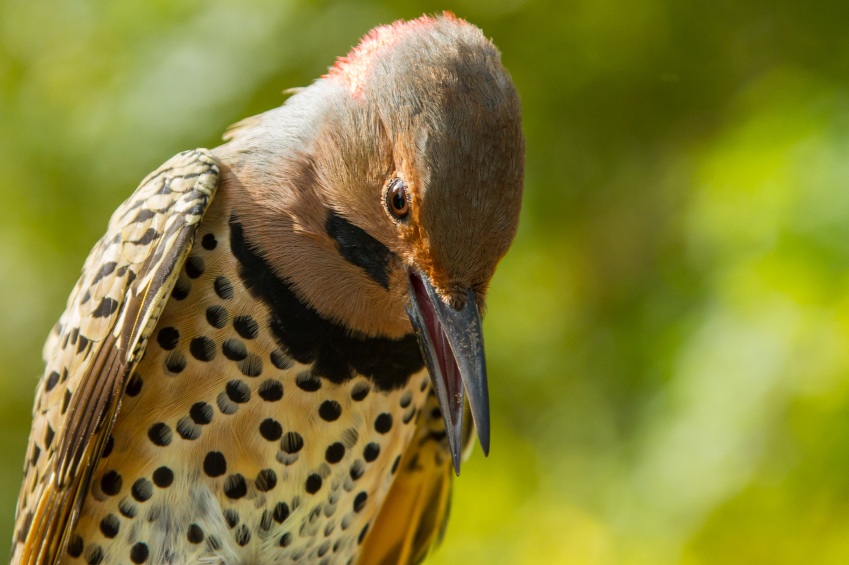Imagine seeing this adorable little customer looking in your store window. That’s what happened to long time employee Karen Theodorou as she was closing up shop at the Birdwatcher Supply Store in Buford, one of the retail outlets for Cole’s Wild Bird Products. Karen says she had just closed out the register around 6:30 on July 13th and was headed for the door when she looked up and saw what appeared to be a curious pooch. She looked closer and realized it was actually a little fawn all alone at the door. Karen sat all her things down and grabbed her cell phone to take a picture. “He couldn’t see me because of the reflective glass. So, I snapped a few photos,” Karen said.
The store is located in front of a large forested wetlands area. So, employees are used to seeing wildlife such as deer, rabbits, and hawks behind the store. Karen assumed this little fawn came from the back and had wandered to the front of the store, where it could run into potential danger. “He was right in front of a busy shopping area, and the street isn’t far away. So, I wanted to make sure he would head in the right direction, back to the woods and his mother. He saw the reflection in the glass and hit the store window. I went outside, and he ran toward the store next door and fell on the wet sidewalk. But, he got up quickly. I followed him to make sure he headed in the correct direction, back to the woods,” said Karen.
As soon as Karen got home, she went straight for Google to find out why this little fawn might be without his mom. She found out that fawns are commonly seen away from their moms. There’s a very good reason for that. It’s nature’s way of keeping the fawns safe from predators. It seems the fawns don’t have a strong scent, but their mothers do. So initially, mom stays with the fawn just enough so that it can nurse. By one month old, the fawn begins foraging for food and by three months old, it is weened. If you’d like to read more about fawns, please check out the article below.
Here’s a photo of Karen Theodorou as she is banding hummingbirds. She describes herself as “a nature nut”. Thanks, Karen! Please share this story with friends. And, join Cole’s on Facebook.







